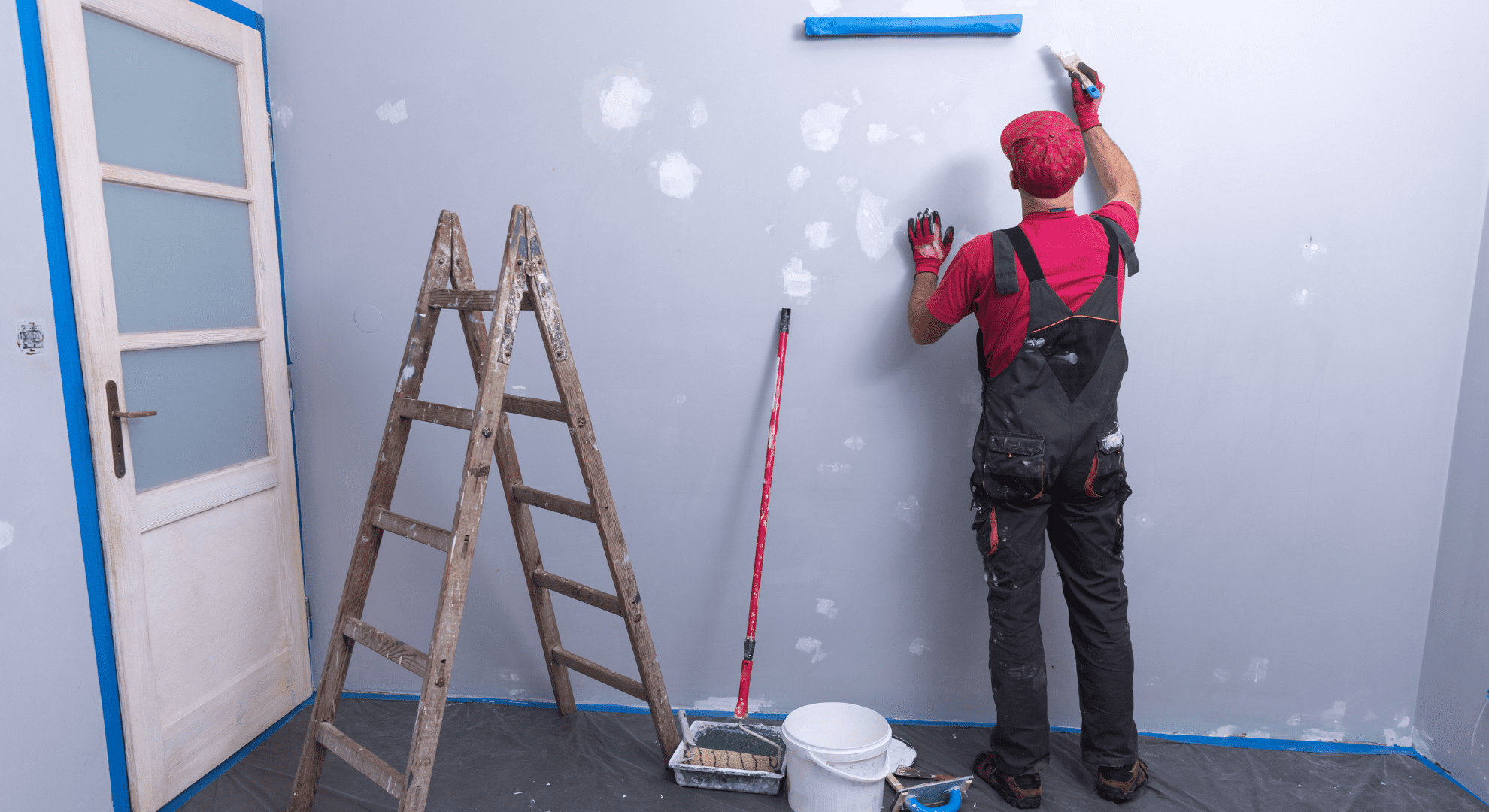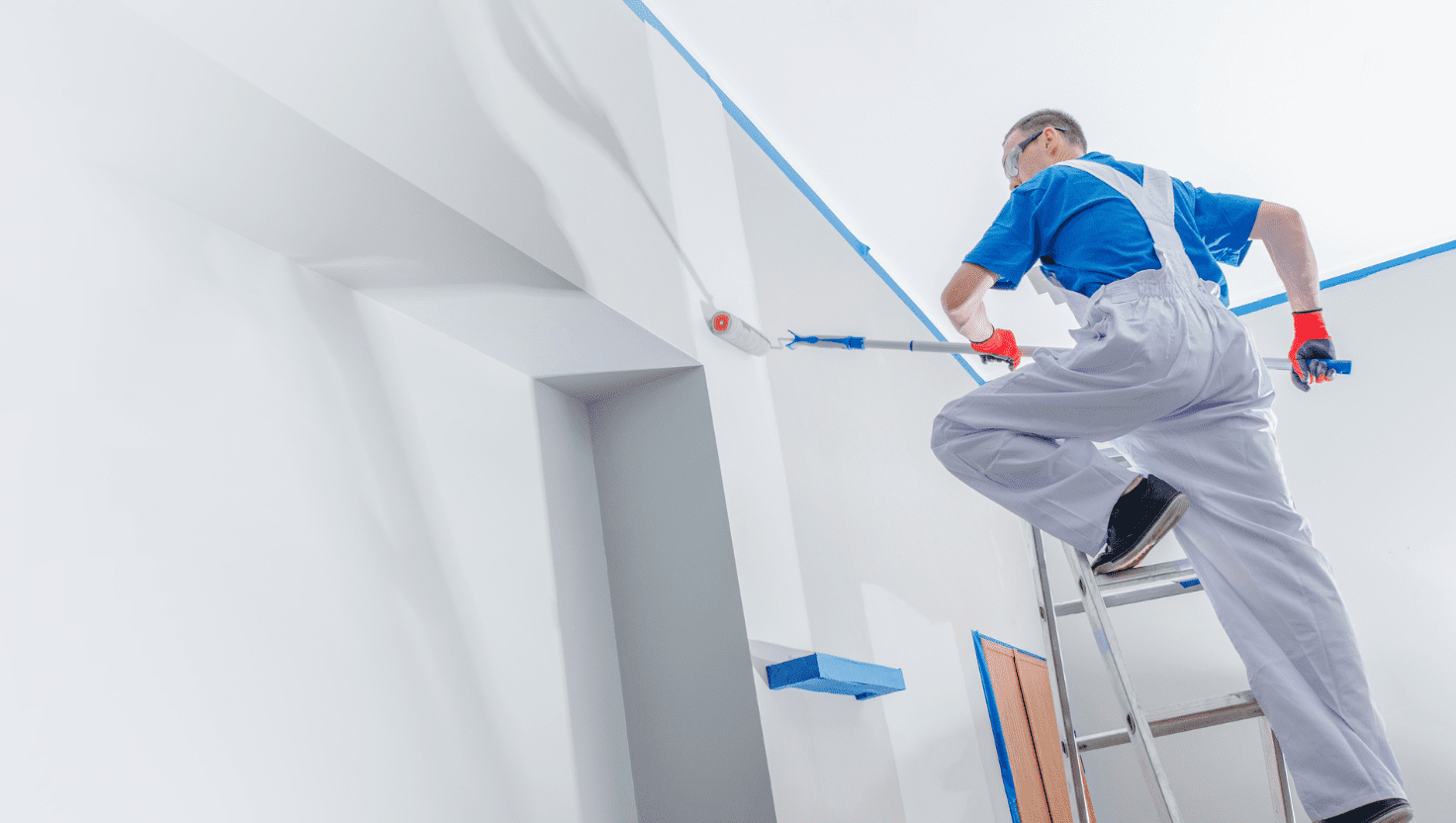Is there a small scratch, a scuff mark, or a stain on your wall that’s been bothering you? You might be contemplating whether to repaint the entire wall or if it’s possible to do a simple touch-up instead. Well, with the right techniques and preparation, touch-ups can be a practical, time-saving solution to restore the aesthetic appeal of your walls.
This article provides an in-depth guide to executing the perfect touch-up, saving you time and effort on full-scale repainting. Furthermore, with a renowned Perth residential painting company like Contrast Painting, your touch-ups can be expertly executed to seamlessly blend with the rest of your wall.
Understanding the concept of wall touch-ups
A wall touch-up is a simple concept in theory. It refers to the act of applying paint to a small area on your wall that has been scratched, stained, or otherwise damaged, in an effort to conceal the imperfection and restore the wall’s pristine look. However, if not properly executed, a touch-up can stick out like a sore thumb, ruining the aesthetics of your wall.
Colour matching: a critical first step
The most critical component in the art of wall touch-ups is colour matching. Imagine a deep red blotch on an otherwise serene green wall; it immediately draws your eye. When the touch-up paint’s colour varies even slightly from the existing wall colour, it can lead to a similar effect. Therefore, achieving a perfect colour match is imperative.
Retaining leftover paint from the original painting job is a common and recommended practice. Not only does this guarantee an exact colour match, but it also ensures that the paint’s formulation and sheen level match the wall paint. However, it’s crucial to store the paint properly to prevent it from degrading. Sealed paint cans should be kept in a cool, dry place away from direct sunlight.
Despite this, there can be situations where the stored paint might not be usable, or perhaps the original paint is no longer available. Additionally, ageing paint on walls can fade due to prolonged exposure to sunlight or interior lighting, while stored paint might have altered characteristics due to long-term storage. This discrepancy could cause inconsistencies when old paint is used for touch-ups.
When faced with such situations, it’s time to turn to technology. Modern paint stores are equipped with colour-matching technology that can replicate your wall colour with great accuracy. You simply need to provide a small chip of the wall paint (an inconspicuous corner or hidden spot is a good place to get this). The technology scans the colour, and the paint store creates a matching colour for you.
The importance of sheen consistency
While colour is a fundamental factor, the sheen or gloss level of your paint is another critical component that can significantly affect the outcome of your touch-up job. The sheen of paint is determined by its formulation and it impacts how the paint reflects light.
Paints are available in various finishes, each with a different sheen level, such as flat, matte, eggshell, satin, semi-gloss, and high gloss. If your touch-up paint doesn’t match the sheen level of your existing wall paint, the touched-up area can appear mismatched, especially under certain lighting conditions.
If you’re getting new paint for touch-ups, be sure to specify the original paint’s sheen level. Even a minor deviation in the gloss level can result in a visible touch-up. However, if your wall has been subjected to heavy wear and tear or the paint has significantly dulled over time, a perfect sheen match might still look off. In such cases, you may need to consider a more extensive repaint.
Assessing the wall’s condition
Before diving into the touch-up process, it’s also essential to assess the condition of the wall. If the wall is damaged, such as with chips, cracks, or holes, you might need to carry out minor repairs before starting the painting job. Using a putty or filler to patch up these damaged areas will provide a smooth surface for your touch-up paint to adhere to.
If the wall is stained, make sure to clean the area with a mild detergent solution and let it dry thoroughly. For stubborn stains, you might need a stain-blocking primer to prevent the stain from bleeding through your touch-up paint.
In situations where the wall has extensive damage, or the existing paint is peeling or flaking off, a touch-up job might not suffice. In these cases, repainting the entire wall, or possibly the entire room, might be your best bet.
Technique: the key to blending success
Once you have a perfect colour and sheen match, the next crucial element is your painting technique. The key to a successful touch-up lies in the ability to blend the new paint with the old seamlessly, a skill that is more art than science. Here’s an eight-step guide on how you can seamlessly blend a touch-up into the existing wall paint:
Step 1: Gather your supplies
- Before starting the touch-up process, gather all the materials you will need. This typically includes:
- Touch-up paint
- The same type of applicator (brush or roller) used for the initial painting job
- Paint tray
- Cloth or rag for any cleanup necessary
Step 2: Prepare your paint
Stir your touch-up paint thoroughly to ensure it’s well mixed. This step is crucial because pigments can settle at the bottom of the paint can over time. If you’re using an old can of paint, make sure there’s no dried or chunky paint that could ruin the smooth finish of your touch-up.
Step 3: Load your brush or roller correctly
The next step is to load your brush or roller with the right amount of paint. You don’t want too much paint as it can lead to drips and a finish that doesn’t match the rest of your wall. Instead, dip your brush about one-third of the way into the paint, and then scrape one side of the brush against the side of the can to remove excess.
Step 4: Apply paint to the centre of the touch-up area
Now, it’s time to start painting. Apply the paint lightly in the centre of the touch-up area. Be mindful not to apply too much paint at once. The goal is to apply a thin coat that can be built upon if necessary.
Step 5: Feather the paint outwards
This step is where the ‘art’ of the touch-up comes in. Instead of stopping at the edge of the touch-up area, continue to spread the paint out into the existing wall. Use your brush to lightly blend the new paint with the old, feathering it outwards to create a gradual transition between the old and new paint.
Step 6: Maintain a ‘wet edge’
While feathering, it’s crucial to maintain a “wet edge.” This term refers to the practice of only painting into wet paint (as opposed to letting the paint dry and then painting over it). This technique helps to prevent visible lines and helps the new paint blend seamlessly with the old.
Step 7: Review and repeat if necessary
After the paint has dried, assess your touch-up. If the patched area is still noticeable, you may need to repeat the process. Sometimes, it takes a few layers of feathering to completely blend the touch-up. Remember to wait until the paint is dry before adding a new layer.
Step 8: Clean up
Once you’re satisfied with your touch-up job, it’s time to clean up. Rinse your brush or roller thoroughly and seal your paint can properly for future use.
The key to mastering touch-ups lies in practice. Over time, you’ll develop a better understanding of how much paint to apply, how far to feather it out, and how to blend it in a way that matches the rest of your wall. If you don’t have much experience in touching up walls you may find that despite your best efforts the results don’t turn out exactly as you wanted. Ultimately it may save you time, money, and energy to trust a professional Perth painting company such as Contrast Painting to do the touch-up for you.
Final words
Perfecting the art of wall touch-ups requires a delicate balance of the right tools, paint, technique, and a fair amount of patience. However, the satisfaction of restoring your wall’s flawless finish makes the process worthwhile. Remember, touch-ups are an excellent solution for minor wall imperfections, but for larger damages or for a fresh look, repainting might be your best bet.
If you’re still apprehensive about the DIY route, remember that professional services are just a call away. Perth painting services such as Contrast Painting are skilled professionals with a keen eye for detail. We can help you achieve a perfect finish, whether it’s a touch-up or a complete repaint. So, why wait? Get in touch with us today and let’s give your walls the care they deserve!







